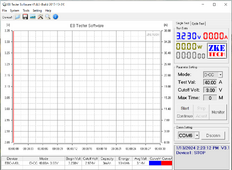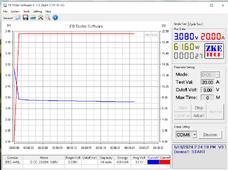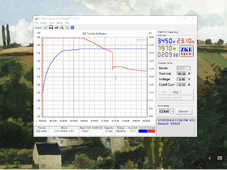Dave (Boog)
New Member
I am trying to test Eve 280 cells using my Ebc-A40l tester.
Just a note, I have already tested 8 Lishen 272ah cells with this same tester without any issues at all.
However as soon as I attempted to run the same discharge and charge test on my Eve 280 cells I am having problems.
Both the Lishen and Eve cells have been in boxes since I received them in May 2021. Unfortunately I’ve been too busy to do anything with them.
When I try to run a discharge on a cell at 40 amps the test automatically turns off. See the first screen grab. The amps on the chart instantly falls to zero.
Only when I lower the amperage to 20 amps does it let me discharge these cells.
These are 280 ah cells and I can see no reason why I can discharge them with 40 amps? The Lishen cells discharged at 40 amps with no problem.
Any ideas? I’m stumped? How can I test these cells to be sure they are ok before I build my battery?


Just a note, I have already tested 8 Lishen 272ah cells with this same tester without any issues at all.
However as soon as I attempted to run the same discharge and charge test on my Eve 280 cells I am having problems.
Both the Lishen and Eve cells have been in boxes since I received them in May 2021. Unfortunately I’ve been too busy to do anything with them.
When I try to run a discharge on a cell at 40 amps the test automatically turns off. See the first screen grab. The amps on the chart instantly falls to zero.
Only when I lower the amperage to 20 amps does it let me discharge these cells.
These are 280 ah cells and I can see no reason why I can discharge them with 40 amps? The Lishen cells discharged at 40 amps with no problem.
Any ideas? I’m stumped? How can I test these cells to be sure they are ok before I build my battery?





